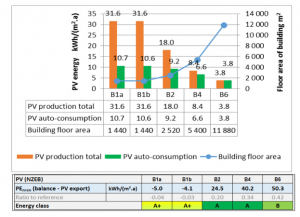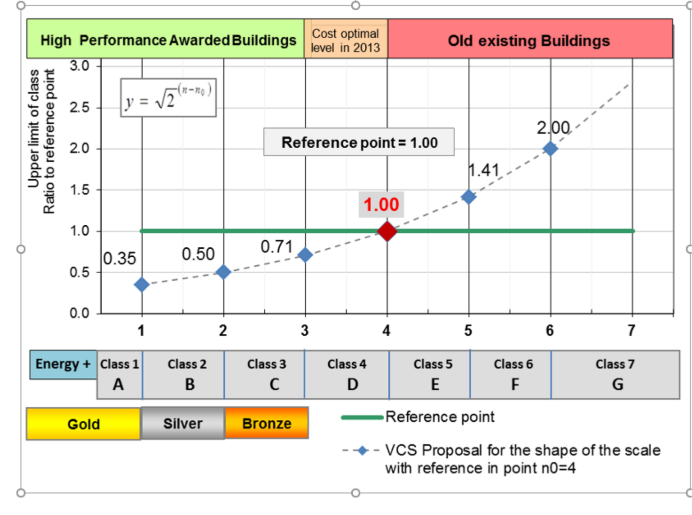A joint workshop with ALDREN project, CEN-CE project and EPB Center was held on 28 February 2019 at the European Energy Efficiency Conference in Wels (AT). Below is the content that took place in this workshop entitled “EU projects supporting EPBD implementation”. Author: Jana Bendžalová, ENBEE, Slovakia
A common European Energy Performance Certificate is possible – Application of the European Voluntary Certificate (EVC)
The revised EPBD amended by Directive 2018/844 aims to accelerate the cost-effective renovation of existing buildings and to promote smart technologies in buildings. The role of energy performance certificates (EPC) has been strengthened by the Directive 2018/844 amending EPBD (Directive 2010/31/EU) by recommendation to be improvements achieved as a result of the renovation assessed by comparing energy performance certificates issued before and after the renovation. The Member States are asked to ensure that the national certificates are of good quality to provide reliable information.
While the national EPCs do not provide yet direct comparability of energy performance ratings across the EU and do not consider in the same way the innovative solutions and all technical systems [1], the aim of ALDREN European Voluntary Certificate (EVC) is to provide transparent advisory tools for building owner, tenant, financial institutions and policy makers by energy ratings and targets comparable at European scale. European voluntary certificate could facilitate the adoption a voluntary European certification scheme for non-residential buildings according to EPBD Article 11 (9).
The ALDREN energy performance indicators ensure transparency and reliability through:
- A harmonized calculation methodology based on new CEN standards developed under Commission Mandate M/480, using hourly calculation step, local climate conditions, national use patterns and European primary energy factors,
- Harmonized and transparent consideration of the innovative solutions, technical systems and renewable energy used and produced in building,
- An energy class of the current state of building and an assumed energy class after realization of recommended improvements and potential savings are reported with potential link to optional building renovation passport (recommended by revised EPBD),
- Additional numerical indicators, for the entire building’s overall energy use (recommended by revised EPBD), delivered energy and measured energy (optional)
- Integration of energy performance indicators and related data in the Building Renovation Passport.
ALDREN EVC provides also a possible link with financial valuation, asset valuation and financial strategies to facilitate energy efficiency renovations.
Possible link with the existing voluntary certification schemes (IVE, HQE, DGNB) has been investigated to be EVC potentially used as a transparent energy module included in these wider voluntary European environmental schemes.
COMMON ENERGY PERFORMANCE RATING AND SCALE
The options for the scale and reference for benchmark energy performance were tested on five theoretical model buildings of different size and properties see Fig. 1) located in 3 climates (Palermo, Bratislava, Helsinki) and will be applied on real pilot buildings before final energy rating and scale for EVC will be proposed.

Fig. 1. Floor area of model buildings for testing the scale and example of B1a model building

The scale is proposed as non-linear stepped scale with 7 main classes (A-G) based on one reference point located on the upper limit of class “D”. (see Fig. 2). The reference is based approximately on the Cost optimal level of minimum requirements calculated by Member States in 2013. Energy Class „A“is the ALDREN NZEB definition.
Fig. 2. The EVC scale with one reference point
The Member States have to define the nearly zero-energy buildings including a numerical indicator of primary energy use expressed in kWh/m² per year.
The importance of transparency of the indicators selected for energy performance evaluation across EU is demonstrated in Fig. 3.

The different numerical values of energy performance indicator expressed in primary energy are achieved for the same building depending on the rules for consideration of distant renewable energy by type of primary energy factor (total, non-renewable) and depending on the consideration of on-site renewable energy production (export allowed or not). Besides the rules on how to take into account the produced and exported energy also the calculation step and the step used for balance of produced and consumed energy is important for energy performance of building assessment (hourly, monthly). Harmonized and transparent energy performance indicators and consideration of the renewable energy used and produced in building in the same way makes the ALDREN results comparable at EU level.
Fig. 3. Numerical values of energy performance indicators expressed in primary energy for the same building

All indicators will be reported in ALDREN EPC (see Fig. 4), because of different situation in MSs regarding the possibility to export energy into the grid.
Following recommendation by Directive 2018/844 the additional numerical indicators, as the overall energy use, delivered energy per energy carrier and per service are also included.
Fig. 4. Template of the first page of EU voluntary energy performance certificate (EVC)
DEEP RENOVATION AND EVC ENERGY CLASSES
The energy performance certificate shall include recommendations for improvement of the energy performance of a building, unless there is no reasonable potential for such improvement compared to the energy performance requirements in force and the public authorities which provide measures of a financial nature are encouraged to link the application of such measures to the indicated recommendations from energy performance certificates. The Directive 2018/844 moreover recommends to provide more detailed renovation strategies in optional building renovation passport that is complementary to the energy performance certificates. The ALDREN EVC recommendation for improvement of EP will be connected with ALDREN renovation passport.
The packaged solutions for deep renovation strategies were tested on ALDREN model buildings against proposed energy classes considering the appropriate sequence of renovation steps to avoid the lock-in effect and considering different pre-renovation stages.
The main target for renovation steps is achievement of at least 60% primary energy savings or NZEB level. At the same time the fulfillment of the national minimum requirements for existing buildings has to be ensured by designer of building renovation.
The EPBD asks MS to set the NZEB level as the minimum requirement from 2020 and to ensure that also all existing buildings undergoing major or deep renovation are renovated to the same level if it is economically, technically and operationally possible.
The main target of ALDREN renovation strategies is energy class “A” that is approximation to national NZEB level. Due to different input parameters and indicators used in national NZEB definitions and for comparability at EU level, the NZEB level in ALDREN EVC is not necessarily in compliance with the national NZEB definition.
The levels of building quality applied to model buildings are:
- existing building (EX) – initial stage, baseline (based on the typical national existing building description in national reports from CO level calculation in 2013)
- CO level (CO (2013)) – identified in 2013 (Source: National reports from CO level of energy performance calculation) – this level is approximately reference value (energy class “D”) or one of the initial stages of building before renovation
- NZEB – target – based on the national definitions and best practices for NZEB. It can be achieved only with renewable energy production (PV)
The different stages (steps) are partial envelope and systems improvements to NZEB level.

Fig. 5. Example of different renovation stages and potential energy savings and energy classes for model building B1a
The NZEB is possible to achieve only with the on-site renewable energy production. Importance of proper planning and consideration in calculation of PV electricity production is visible in Fig. 6 where the same installation (investment) is applied in NZEB buildings of different size. The example in Fig. 6 is based on hourly step that is an important advantage of ALDREN common approach. Energy produced by PV and consumed by building are balanced in the same hour. The possible auto-consumption by building in example in Fig. 6 varies from 33% to 100% of produced PV electricity.
The hourly calculation step for balance used in ALDREN procedures gives correct picture about the cost efficiency of investment in PV especially in countries where the exported PV electricity to grid gives no benefit to building owner.

Fig. 6. Example of the same PV production in buildings of different size and the same quality (NZEB level).
CONCLUSION:
The results from application of the European Voluntary Certificate on model buildings as well as the results from the testing phase on real pilot buildings that starts soon will be implemented in the final version of the ALDREN Common European energy performance certificate with the aim to facilitate the harmonisation, comparability and transparency of energy performance assessment across EU as required by the revised EPBD amended by Directive 2018/844.
REFERENCE:
[1] “Technical assessment of national/regional calculation methodologies for the energy performance of buildings“ Final report (2015-01-30) https://ec.europa.eu/energy/sites/ener/files/documents/EPB_calculations_in_EU.pdf

Recent Comments